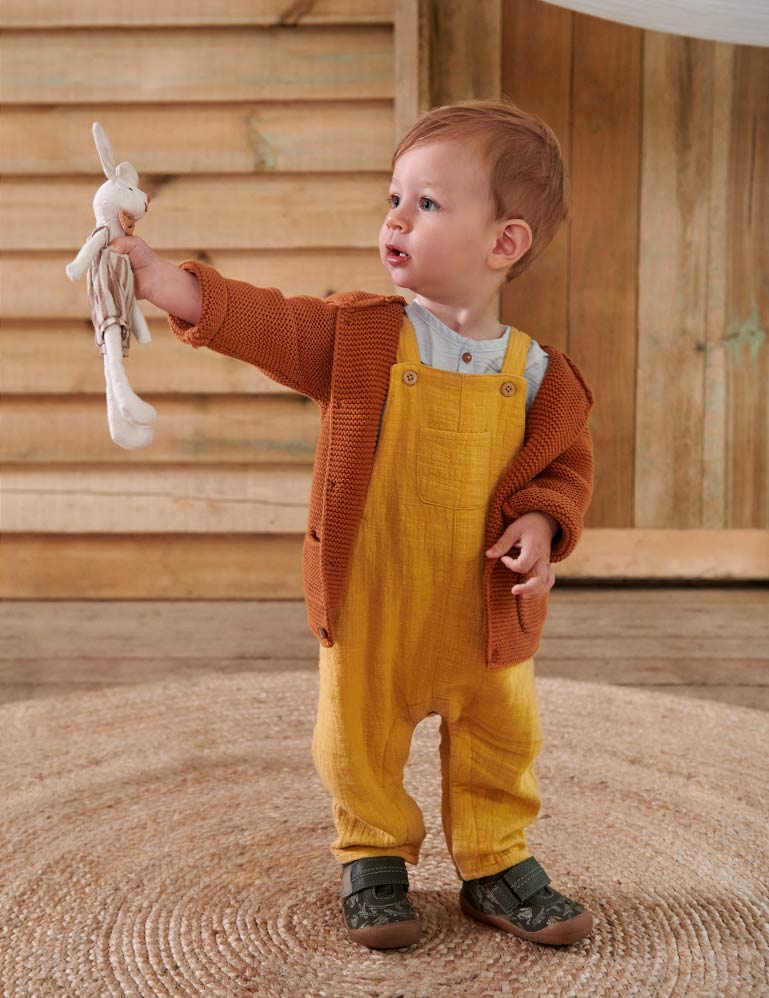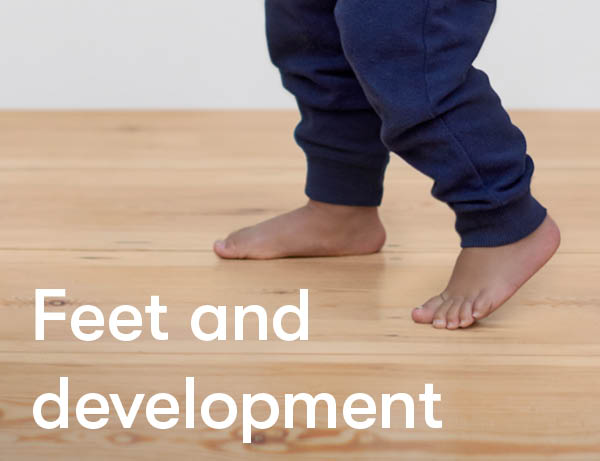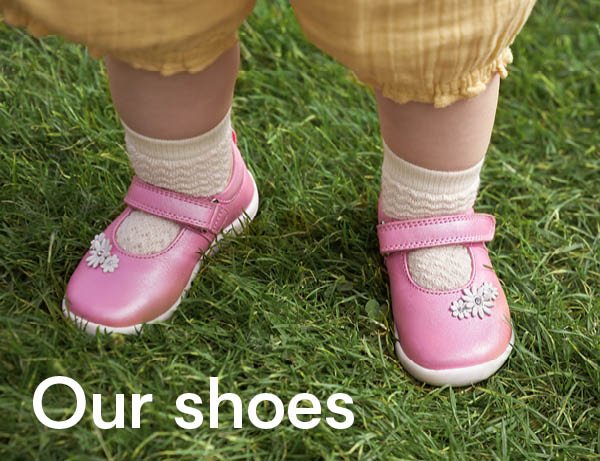Most children take their first steps and start walking between 9 and 15 months of age, but development varies from one child to another, so they can start earlier or later. The most important thing is not to try to make your child to walk before they’re ready.
Browse our list of top 10 frequently asked questions below:
Barefoot is best for babies who are crawling and in the early stages of learning to walk, so don’t be tempted to get shoes too early. At this early stage their feet are at their most delicate stage they are simply soft cartilage with a chubby appearance which can easily be manipulated by ill-fitting shoes. However, some childcare facilities insist that babies in their care wear foot protection. Our fitted pre-walkers are a great option as they are specifically designed for this development stage.
When your baby is walking unaided most of the time then they're ready for their first pair of shoes. If you’re still unsure you could visit your nearest children’s shoe shop for advice. You’ll need to find one which offers a professional fitting service for children’s shoes. A trained fitter will ask about your child’s development, observe your child’s walking and tell you when the time is right to buy those all-important first shoes. Alternatively, we do sell a small foot measuring gauge on our website to help with sizing.
It’s important to select shoes that have been specifically designed for this development stage (not scaled down versions of adult shoes), they’ll need to allow natural movement and have the right level of support and protection for their soft and lightly structured feet. You can either go to a shoe shop with staff who have been specially trained to fit children’s shoes - as they will be able to advise you on the most suitable footwear for your little one - or purchase online from our website. Take a look at our buying guide to check what to look for in a pair of first walking shoes. Feet vary in size and shape so check that the shoes are available in whole and half sizes and in a range of width fittings to ensure the best possible fit for your child.
Properly fitted shoes play a vital role in helping to safeguard the healthy development of your child’s feet. Shoes which don’t fit properly can cause sores or blisters and at worst may even lead to long-term foot problems.
Experts estimate that 70% of adults suffer from foot health problems and that the majority of these problems are the result of wearing ill-fitting shoes in childhood. This is because when your child is very young the bones in his feet are made of soft spongy cartilage which can easily be pushed out of alignment by shoes (and even sleep-suits and socks) which don’t fit properly. The nerve endings in babies’ feet also take time to develop, so your child may not be able to let you know if their feet are sore or squashed by their shoes.
At best, poorly fitted shoes won’t wear as well, so never settle for anything less than the perfect fit.
Children's feet grow in spurts, so they should be checked for size every six to eight weeks when they are toddling, and every three to four months after that.
Don’t be surprised if this happens, or if your child is fitted with shoes which aren’t exactly the size shown on the measuring gauge. Shoe shapes and sizes vary between styles and brands (just as they do in clothing) so the foot gauge is only used as a guide. A trained fitter will only judge if a shoe is the correct size for your child once it is on the foot and has been carefully checked for comfort and fit. If you have bought your shoes from us online you can use our ‘check the fit’ guide to ensure you have a good fit.
It’s not a good idea to hand shoes down from one child to another as no two pairs of feet are the same and second-hand shoes will have moulded to the shape of their previous owner’s feet and style of walking. Wear and tear may also have reduced the protection and support offered by the shoes.
Most children have one foot slightly bigger than the other, and their footwear should always be fitted to the larger foot.
Children’s feet sweat up to an egg-cup full of moisture each day, so look for shoes with leather uppers and with leather or breathable mesh linings. Leather allows perspiration to escape through the surface of the shoe, helping to keep feet drier and healthier. Try to rotate your child’s footwear so that each pair of shoes has a regular airing.


 Find out more >
Find out more >
